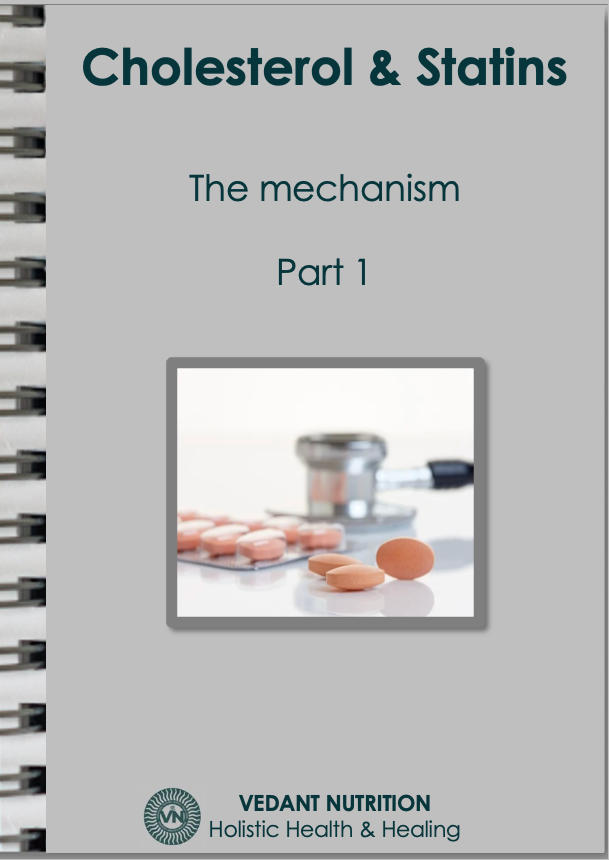Cholesterol & Statins, The Mechanism Part 1
- Maria Gautam

- May 5, 2024
- 3 min read
Here, I outline the commonly asked questions about Cholesterol and Statins.
I briefly discuss the role Cholesterol plays in the body and the mechanism by which Statins work within the body.

What is Cholesterol?
Cholesterol is a sterol lipid: a fatty, waxy substance made by the liver and found in all the cells in the body including the blood.
Why is cholesterol important?
I will list a few of the many crucial functions cholesterol performs in the body: brain function, liver, reproductive hormones, digestion, muscle and nerve conduction are all highly dependant on cholesterol.
Cholesterol is required for Vitamin transport and mineral absorption. Cholesterol is the precursor to Vitamin D and helps metabolise Magnesium (magnesium naturally lowers LDL, low density lipoprotein and VLDL in the blood)
Cholesterol is the body's repair plaster/substance. Scar tissue contains high levels of cholesterol, including scar tissue in the arteries**
Cholesterol is a precursor to steroid hormones like testosterone, oestrogen and cortisol.
Cholesterol is required by your liver to synthesise bile acids that absorb fats during digestion (people with low serum cholesterol, often have trouble digesting fats)
Cholesterol is needed for cell membrane function
Cholesterol is a major component of the brain, the myelin sheath that insulates nerve cells is primary made of cholesterol
Cholesterol is also contained in the synapses that transmit nerve impulses
Cholesterol is vital to normal neurological function. It plays a key role in the formation of memory and the uptake of hormones in the brain, including serotonin, the body's feel-good chemical (When cholesterol levels drop too low, the serotonin receptors stop responding)
Cholesterol may play a protective role in cancer prevention (low cholesterol levels are associated with increased rates of cancer)
What are Statins, how do they work: the flip side?
Now let me shed some light on Statins and their mechanism in the body.
Statins are competitive enzyme inhibitors, a highly effective class of drugs. They work by inhibiting the major regulatory enzyme responsible for cholesterol synthesis in the liver, the Mevalonate pathway. Thereby interrupting lipid (fat) synthesis, resulting in lower blood cholesterol. However, we cannot inhibit the Mevalonate Pathway (cholesterol production) via statins without severe consequences.
A consequence of the effective liver enzyme inhibition by statins is elevated ALT (levels in the blood. Elevated ALT levels indicate liver inflammation and liver injury.
Secondly, statins work by redirecting LDL receptors to shift cholesterol from the serum/blood into cells with surface LDL receptors. This blood cholesterol is mainly shifted into intestinal, liver and muscle cells.
Elevated cholesterol in cells is toxic and can cause apoptosis or programmed cell death, as seen in Statin myopathy: apoptosis of muscle cells due to increased cholesterol within the muscle cell
Statin induced muscle damage or Statin myopathy symptoms include, constant soreness or weakness in the shoulders, thighs, hips, or calves, generally on both sides of the body
In short Statins are really effective in lowering the overall cholesterol in the body, they eventually leech the cholesterol from the cells, leading to low cholesterol levels in the serum. Statins do their job really well, but lets ponder the following question.....
Is Cholesterol really the culprit behind Atherosclerosis/heart disease and does it need to be lowered?
Cholesterol is part of the process that leads to heart disease but it is not the inciting event. Trying to treat heart disease using statins by lowering the cholesterol is the wrong approach.
Glycated haemoglobin (elevated blood glucose) is where the foundation of CVD/heart disease lies. Elevated blood glucose oxidises the beneficial cholesterol, HDL
Glycated haemoglobin leads to an increase in harmful free radicals in the blood, damaging the lining of the cell membrane of blood vessels, cholesterol rushes to the damaged site to repair it like a plaster. Remember cholesterol is body's repair plaster..** scar tissue including in the arterial walls contains cholesterol! Glycated blood additionally leads to increased blood viscosity which results in impaired blood flow.
We must address the root, it is your diet that glycates your haemoglobin, damages the lining of blood vessels and oxidises your beneficial cholesterol, factors ultimately responsible for atherosclerosis and other CVD.
Lowering cholesterol via statins severely damages muscles, nerves, memory, lowered cholesterol is associated with depression and cancer.
I am not interested in the LDL number in lab work, I rather concentrate on the ratio between triglycerides and HDL in your blood work. It is a more accurate indicator of health and heart disease.
Ultimately your diet and metabolic health is the greatest indicator and cause of heart disease.
Next: Statins, A vice or virtue? Part 2 & 3




Comments